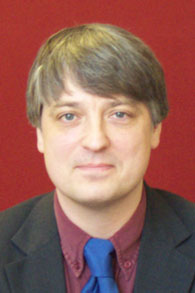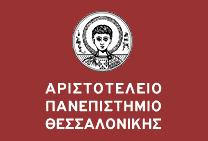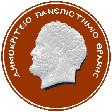Invited speakers

|
| Dr. Nikolaos Bourbakis |
|
Title: Synergies of AI Methods for Robotic Planning & Grabbing, Facial Expressions Recognition, and Blind's Navigation |
|
Abstract:
Artificial Intelligent (AI) techniques have reached an acceptable level of maturity as single entities and their application to small and simple problems have offered impressive results. For large scale and complex problems, however, these AI methods individually are not always capable to offer satisfactory results. Thus, synergies of AI methods are used to overcome difficulties and provide solutions to large scale complex problems. This talk presents several synergies of AI methods for solving different complex problems. In particular, the first synergy combines AI planning, stochastic Petri-nets and neural nets for coordinating two robotic hands for boxes placement, and neuro-fuzzy nets for robotic hand grabbing. The second synergy is based on neural color constancy for skin detection and enriched with fuzzy image segmentation & regions synthesis and local global (LG) graphs method for biometrics application by detecting faces and recognizing facial expressions. The third synergy uses several image processing and computer vision techniques in combination with formal modeling of vibrations to offer to the blind 3D sensations of the surrounding space for safe navigation. Examples from other synergistic methodologies, such as, body motion-tracking and robotic 3D brain surgery are also presented. |
|
Profile:
Nikolaos G. BOURBAKIS (IEEE Fellow) received his PhD in computer engineering and informatics in 1983, Patras, Greece. He currently is the Associate Dean for Engineering Research, a Distinguished Professor of Information Technology and the Director of the ATR Center at WSU. He has directed several research projects (Applied AI, Image Processing & Machine Vision, Visual Autonomous Navigation, Information Security, Bio-Informatics, Biomedical Engineering) funded by government and industry, he has graduated 14 PhD and 30 MS students, and he has published 300 papers in International refereed Journals, Conference proceedings and book-chapters. Previous working places: SUNY, TUC, IBM, GMU, UP. He is actively involved as an Associate Editor in several IEEE and International Journals and Founder/General/Program Chair in numerous International IEEE Conferences (ICTAI, BIBE, IIS, INBS, NLP, IRS, JIS, RAT, etc). He is the EIC of the Artificial Intelligence Tools Int. Journal (WSP). He is an IEEE Computer Society Distinguished Speaker, and NSF University Research Programs Evaluator, an IEEE Computer Society Golden Core Member. He has received several high prestigious awards, some of them are: IBM Author recognition Award 1991, IEEE Computer Society Outstanding Contribution Award 1992, IEEE Outstanding Paper Award ATC 1994, IEEE Computer Society Technical Research Achievement Award 1998, IEEE I&S Outstanding Leadership Award 1998, IEEE ICTAI 10 years Research Contribution Award 1999, PRS Best Selection Papers Recognition 1999, IEEE BIBE Leadership Award 2003, ASC Recognition Award 2005, SETN Honorary Membership 2006, University of Patras Honorary Recognition Degree 2007. |

|
| Dr. Dominic Palmer-Brown |
|
Title: Neural Networks for Modal and Virtual Learning |
|
Abstract:
This talk will explore the integration of learning modes into a single neural
|
|
Profile:
Dominic Palmer-Brown is professor of neural computing and Associate Dean,
|



